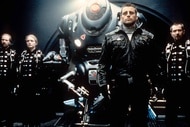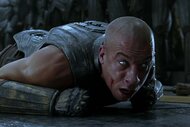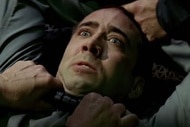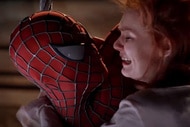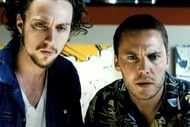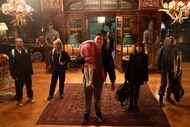Create a free profile to get unlimited access to exclusive videos, sweepstakes, and more!
Ennio Morricone's The Thing score showcased elevated science fiction at its best
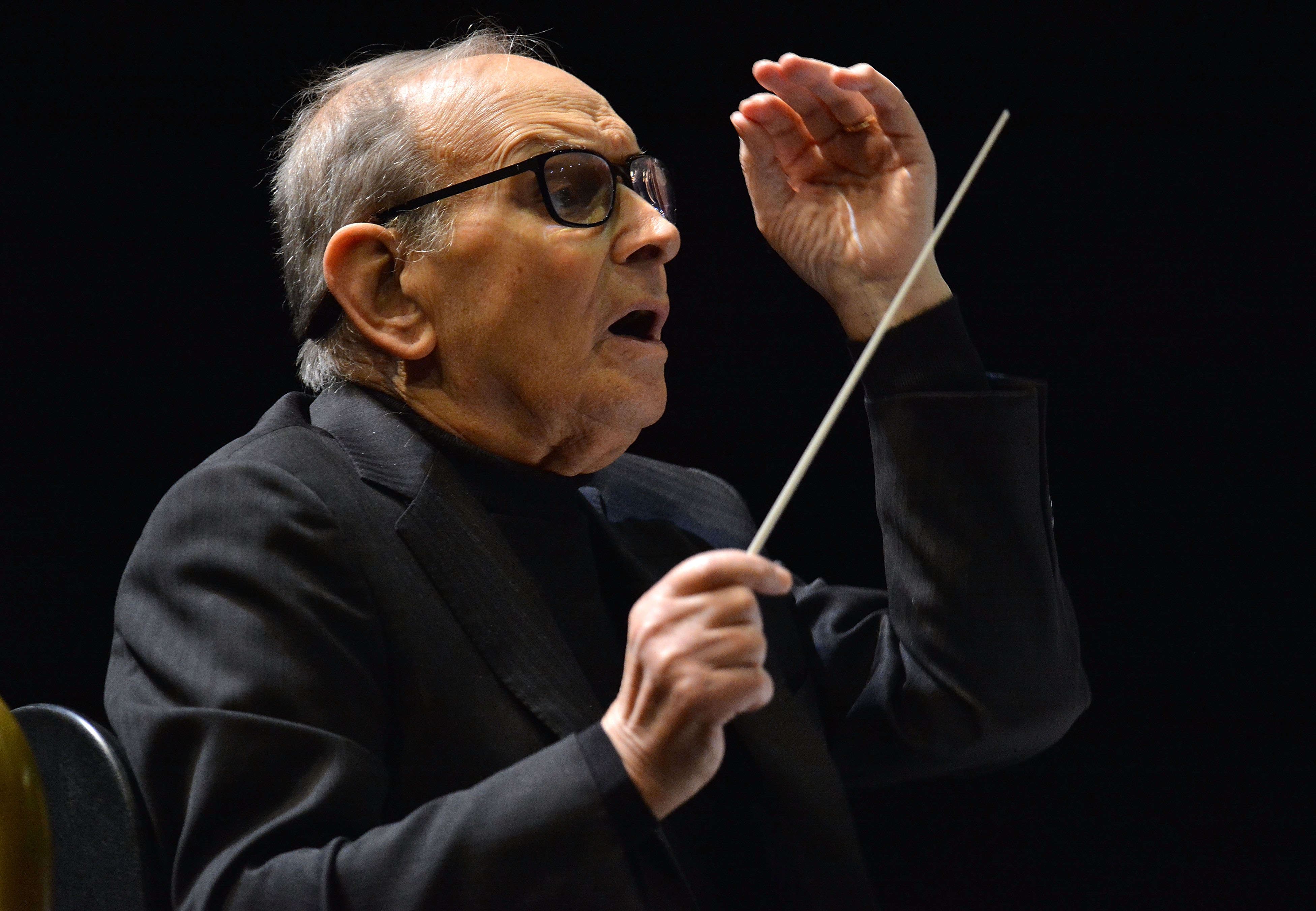
Proclaiming any single work or artist in a creative field as vast as film, music, or art to be the greatest of all time is often a dicey matter. Voices of dissent are inevitable as it’s such a subjective matter, even with legacy and acclaim providing a sort of objective barometer by which to judge it. As such, it’s hard to say if Ennio Morricone is the greatest film composer of all time.
But if someone says he is, it’s also a hard statement to argue with.
Morricone passed away Monday, leaving behind a legacy nigh untouchable in the world of film. His work has defined and transcended genre, often going on to become so firmly embedded in pop culture at large that it becomes a recognizable entity in and of itself. You don’t have to have seen The Good, The Bad, and The Ugly to recognize the opening notes of “The Ecstasy of Gold,” or La Resa Dei Conti to know “La Condanna.” These pieces of music have a legacy all their own, separate from their source material.
While Morricone’s career is most defined by his work in spaghetti Westerns, namely those of director Sergio Leone, his music touched a number of genres, and the composer stayed a vibrant and relevant voice throughout his career (his work in Quentin Tarantino’s recent The Hateful Eight is especially top-notch, and won him his first competitive Oscar in 2016). From Mike Nichols to Brian De Palma to Oliver Stone, Morricone worked with an absolute murderer’s row of directors over the course of his decades-long career, refining a sound instantly recognizable for its utilization of strings and trumpets. He’s effortlessly listenable (I’ve never seen The Mission, one of the films for which his score certainly qualifies as a masterpiece, but I’ve listened to it front to back countless times). However, one of his finest scores not only took him outside of the genre for which he was best known, but also stripped away most of the instruments that he was most famous for using.
The score in question is that of John Carpenter’s seminal horror/sci-fi masterpiece The Thing, which features an iconic main theme and score by Morricone in collaboration with Carpenter. It’s one of the stranger corners of Morricone’s discography, which makes its iconic status all the more delightfully confounding.
By the time The Thing was in production, Morricone was a bona fide master of the form and Carpenter had proven himself an up-and-comer to watch. In the wake of the success of Halloween, The Fog, and Escape From New York, Carpenter was finally able to secure something of a blank check for himself. He cashed it in on a remake of a pulpy 1950s horror movie, itself an adaptation of the novella Who Goes There?. John Carpenter’s The Thing would prove a masterpiece, telling the story of a group of researchers in Antarctica who find themselves trapped in their research center with a shape-shifting alien. Its special effects proved revelatory and it features career-best work from stars Kurt Russell and Keith David. However, it’s the film’s masterful building and guiding of tension throughout that makes it so undeniable a classic — tension largely aided by Morricone’s score.
Carpenter was a huge fan of Morricone — a given for most filmmakers of that day, sure, but Carpenter is on record as saying Morricone’s music was played at his wedding, so, you know. He really loved Morricone’s work. He flew to Rome to convince Morricone to work on The Thing and managed to get the esteemed composer to sign on.
This was new for a Carpenter. Famously, the director also scores most of his films, utilizing his skills as a keyboard and synthesizer artist to compose relatively minimal synth scores, often droning and ethereal in tone. To go from handling the music himself to working with one of the masters of the form must have been a bit of a jarring process, as evidenced by the stories the men have told about working together.
It wasn’t a massively contentious collaboration by any means, mind you, but Carpenter’s reverence for the composer’s work seems to have given way to a certain self-consciousness in allowing himself to fully collaborate on the score as a director and composer so often do. According to Morricone, he knew that Carpenter wanted a synth-heavy score for the film, and prepared samples accordingly before flying out to Los Angeles to record.
Carpenter and Morricone’s accounts of the collaborative process (or lack thereof) that proceeded seem to be a bit at odds with one another, less in an argumentative sense and more in one that seems to suggest a language barrier, and Carpenter’s sheepishness over working with his hero made it difficult for the two creative minds to fully meld. As such, the most reliable account of how the score eventually came about comes from Alan Howarth, a frequent musical collaborator of Carpenter’s.
“The bandwidth is there to hire Ennio Morricone,” Howarth said, recounting the tale in 2017 at a speaking event in London, “So [John] goes ahead, makes his movie... and Ennio goes off to score it. The score comes back and John kind of wrote it off: How do I tell my hero that I don’t like what he did?” It seems that Carpenter wanted the best of both worlds — he wanted to work with one of his heroes but also have a score that sounded like those he’d recorded for his prior films. Carpenter has recounted that, “[Morricone] had written several pieces for The Thing, and I told him that he was using too many notes for the title track and that he should simplify it. He did simplify it, and the title track that you hear is his. He did all the orchestrations and recorded for me 20 minutes of music I could use wherever I wished, but without seeing any footage.” Carpenter then, realizing that certain pieces of Morricone’s score wouldn’t work for particular scenes of tension, went into a studio with Howarth and recorded some tracks to fill out the rest of the film’s score. “I put them in there,” he says, “To glue together the film, but in no way was I trying to compete with Ennio’s score. The score is his.”
There’s a good chance you’re well familiar with the result of the strange collaboration between the two. Morricone’s simplistic, thudding score replicates the slow pound of a heartbeat, hearkening the doom that awaits R.J. MacReady’s ragtag Antarctic crew. Like a Lovecraftian Jaws theme, it lingers throughout the film and finishes it out as the final shot fades, leaving the viewer wondering if our heroes (if you can even call them that) are as in the clear as we may think.
Morricone’s illustrious career is made on these moments. Film is better for having had him work in the field, and science fiction specifically is better for John Carpenter sheepishly asking one of the great film composers of all time to step completely out of his comfort zone and do a weird, pulsing synth score for his shapeshifting alien movie.
The views and opinions expressed in this article are the author's, and do not necessarily reflect those of SYFY WIRE, SYFY, or NBC Universal.
